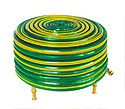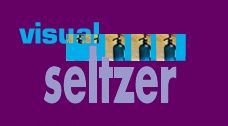 The Online Magazine about New York Designers |
 |
The Other Man's Treasures – or TOMT – is the name
of Rodney Allen Trice's multifaceted studio. Encompassing graphic design,
furniture design and sculpture, his work is definitely not Everyman's
treasure. And his idea of treasure can be a table made from crutches.
Yet his work, often built from or inspired by street finds, has found
its way into places like the Cooper Hewitt Annual Auction and Macy's
windows.
RT: When I moved to New York in 1988, my apartment was the parlor level of a brownstone – so it had nice ceilings, and the whole deal, [but it was empty] and I just thought, "you know what? I'm tired of this. I want furniture!" And after being here for over a year, I thought that I could afford furniture. And, I immediately started running around to, like, Soho, and to all of these fabulous little shops. It was my first exposure to the Eames' and, of course, I would gravitate right to the things that were like, "oh, that's an original Eames piece and la, la, la, la, and just look at this stamp on the bottom," and it was like, three thousand dollars for this wooden chair or what have you, and it was like, "whoa, I can't afford ANY of that!" (laughter) |
|
|
|
LG: What was the first piece you did? Do you remember? RT: Yup. The first piece I did [happened through] my
first job, at Sportswear International magazine. They had these really
great offices, and a photo studio right there. It was a really nice
office space. It was way on the west side. Oh my god, we would watch
the prostitutes smoke crack, from out our windows. I had just moved
to New York, and I was, like, "Yeah, mom, hold on a second. Can I put
you on hold?" and I was watching the prostitutes smoke crack from across
the street, and I thought, "oh god, what am I doing here?" But, they
had [built] this bathroom and there was this extra restroom stall door,
lying around. It was this amazing red color. And the editor in chief
was kind of running around the hallways one night, DB: - Ah, yes, the copper plumbing trick. RT: I'm sure David can attest to this, from his work – copper is such a wonderful metal. It's kind of warm, like wood, but it is metal. LG: What do you think it is about New York that contributes to your work? Obviously, a big part of it is being able to find things on the street… |
|
|
|
LG: It's like a candy store! (laughter) RT: And you walk through, and you see all of this amazing stuff, just everywhere, surrounding you, and that, plus, again, there's such amazing junk thrown out in the city. If I'd stayed in my hometown of Greensboro, Pennsylvania, and had just worked in Pittsburgh, I don't think that I would have done it. I think that I probably would have bought furniture that was Ikea… DB: …Or Ethan Allen. (laughter) RT: Ooh, I almost said that! (laughter) But, the truth is, I probably would have. I probably would have gone in and said, "oh, this is a lovely Ethan Allen chair," and I would have just bought it. DB: You didn't really have exposure to modern design, before you came to New York? RT: No, not industrial design. My background was specifically graphic design. LG: You still work in graphics. Do you spend more time on one area than the other, or do you think it goes in stages? RT: I spend a lot more time doing the graphic design,
only because I DB: Let's talk for a minute about the DUMBO arts center, which you were vice president of. What drew you into it? RT: Part of it was community. Early on there was the idea that we would set up a non-profit organization, which would be the DUMBO arts center. And then a profit organization, that capitalized on the fact that we had all of these skilled and talented craftspeople, designers, graphic designers, whatever, and basically, we would set up sort of a creative services agency. Like, if you had a project, a film, anything… LG: …Like, one stop shopping? RT: Exactly. Whatever you needed. Metal, woodwork, anything. We've got craftspeople that can do it. I had wanted it to become a collaborative kind of effort -- almost kind of a "Cheers," so to speak, of the community, where artists could bounce ideas off of each other, and say, "Oh, my god, you do that? Let's put together something…" DB: And that hasn't happened? |
|
|
|
DB: You mentioned that your work in the DUMBO arts center was to find people to collaborate with. Have you worked in collaboration with others? RT: Not really. And, it's funny that I would be looking to collaborate, because the few collaborations that I have worked with, were kind of miserable experiences. (laughter) LG: In what way? RT: I guess I haven't figured out the best way to be really nice, and work happily with someone, while at the same time, very strongly voicing my opinions too. I have always found for some reason, that I get barrelled over. DB: …You lose your voice? RT: Yeah. LG: It's because you're nice. DB: Have these collaborations been with people in the same area as you, or in other fields, where you're putting together diverse talents? RT: It's been in the same fields… DB: …That could be harder. RT: Maybe it's better to find somebody who is in something that is maybe a little different, so that our combined efforts become something new. DB: One of the things that we, as Visual Seltzer, are interested in, are collaborations, and crossover fields. Where people, because of their proximity here in New York, are finding people with perhaps related interests, but different areas of specialization. LG: David and I collaborate a lot, and it's very interesting, because David doesn't come from a graphics and fashion background, and I don't come from a product / architecture background. It's fun, because… DB: …Because of different viewpoints and different methodologies. LG: And we're from very different schools of design. We've had very different types of educations. It definitely is interesting and it's fun and we love it. But, I've also collaborated with other graphic designers, and have felt totally, completely steamrolled. RT: Exactly. And I don't know how to exactly deal with that. DB: I think it's interesting that you see the collaborations not working so much for you personally, but you want to help engender them, and use some of that cross-pollination. LG: One of the things we talk about a lot is that, so many people who work in New York, in design, are very isolated. I agree, that is why sometimes doing a collaboration is exciting, because you get this infusion, and another perspective. And it's not always something that you agree with, but it's just this…this stimulating thing. RT: It kind of reminds me of my first ICFF show experience.... |
Click to read
part 2. (You're more than half way through....)

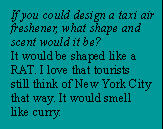 get an idea?
get an idea? 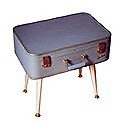
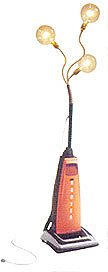

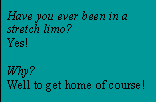 found,
earlier on, how to make the graphic design pay the bills. So, of course,
because this city is expensive, and having my own studio too…almost
50 percent of my bills, my expenses, are for rent. Which just blows
my mind. Every time I write out the check, it makes me gasp. I'm still
working on generating larger amount of income from the furniture design.
found,
earlier on, how to make the graphic design pay the bills. So, of course,
because this city is expensive, and having my own studio too…almost
50 percent of my bills, my expenses, are for rent. Which just blows
my mind. Every time I write out the check, it makes me gasp. I'm still
working on generating larger amount of income from the furniture design.

